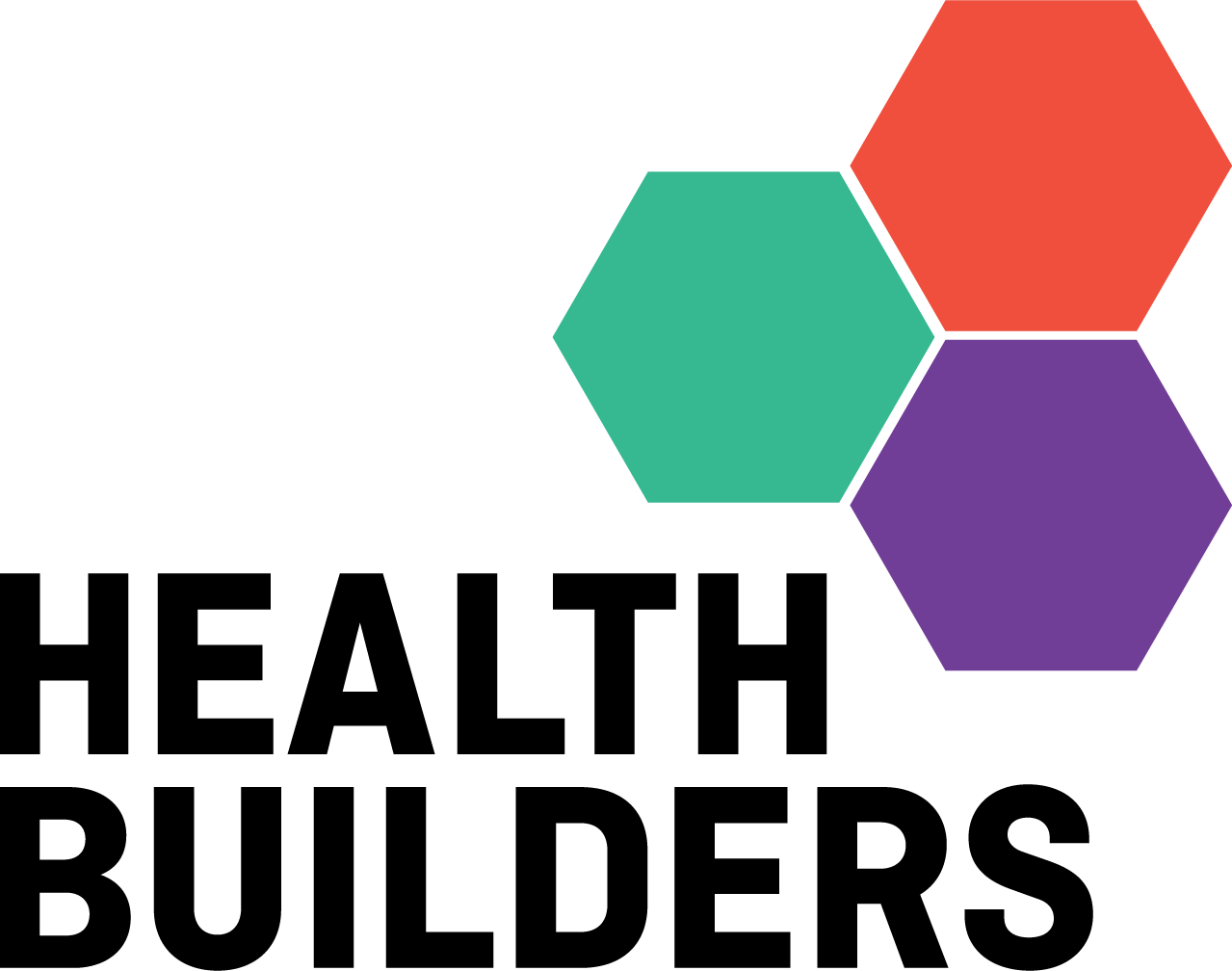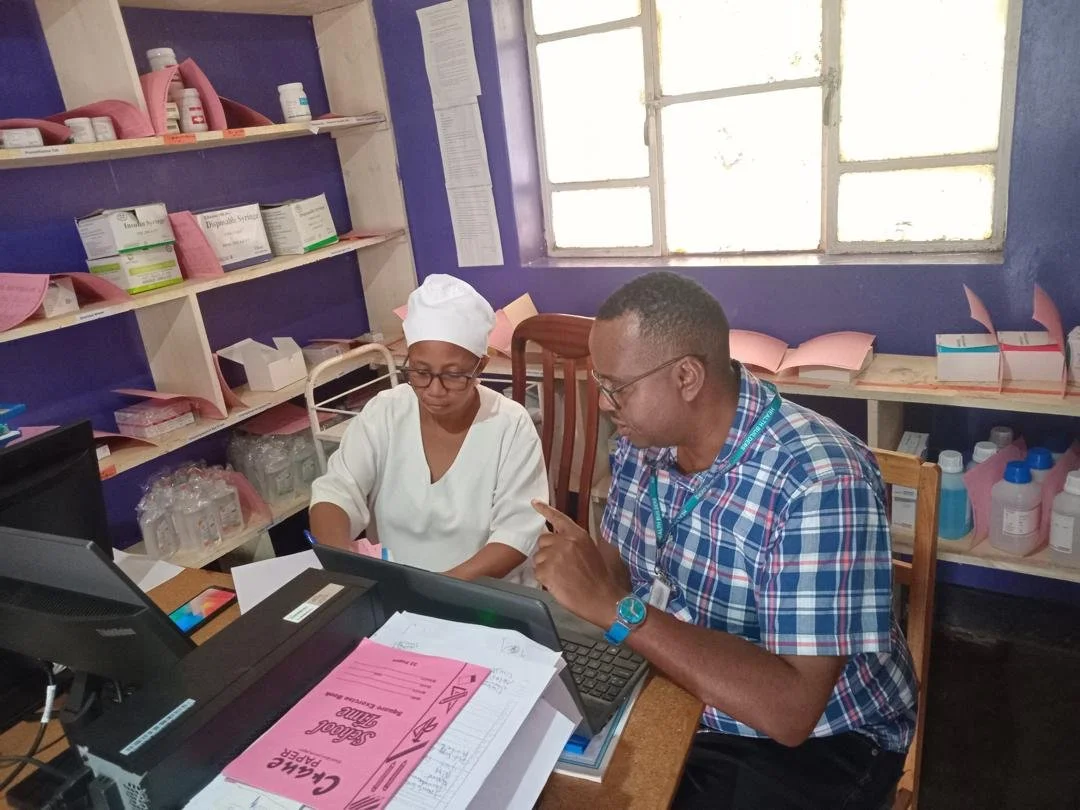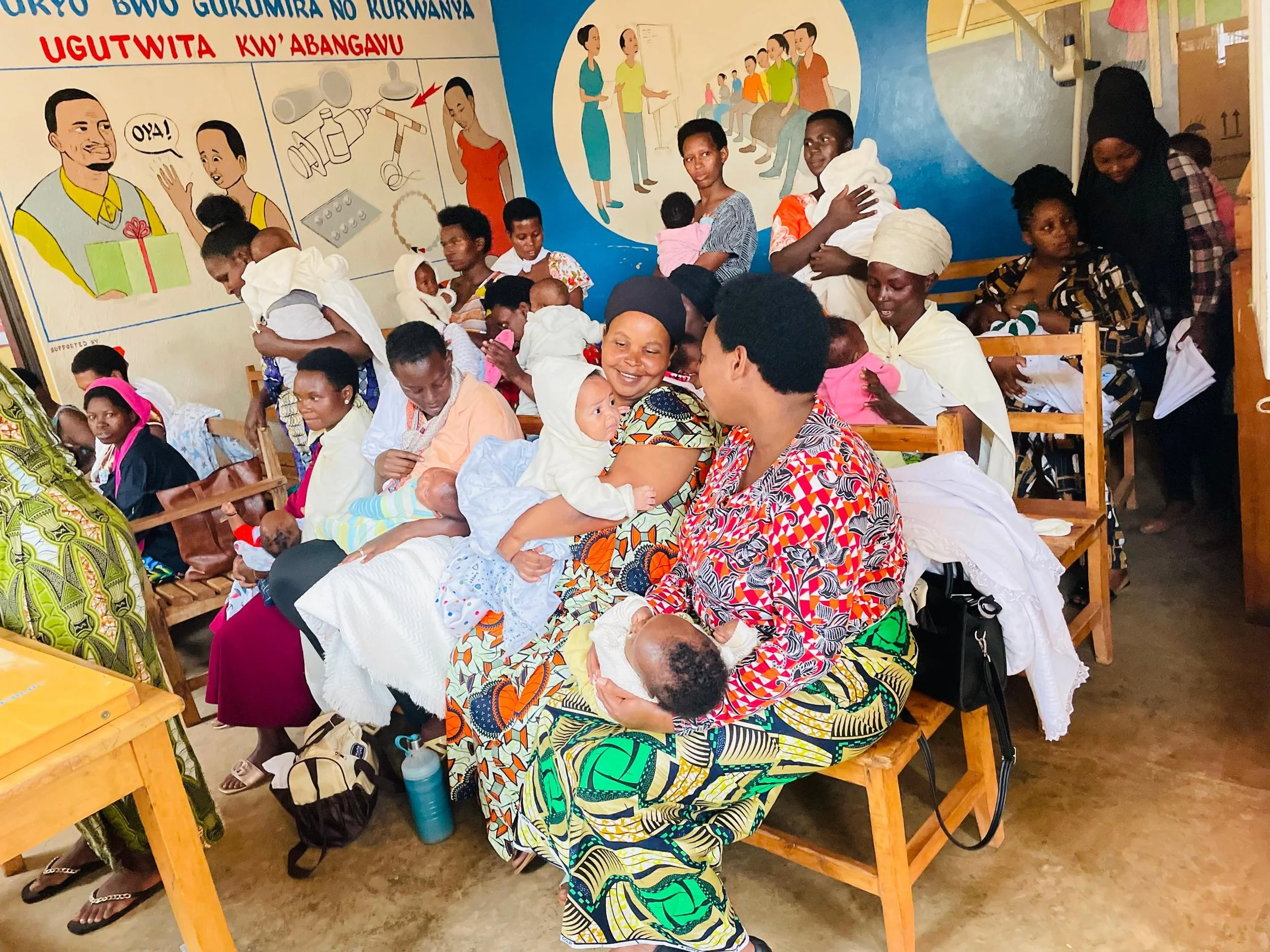3 Ways EMR is Enhancing Health Care in Rural Rwanda
For over a decade, Health Builders has partnered with the Rwanda Ministry of Health to design and implement health system improvements, from infrastructure development to human resource training. Recently, Health Builders has prioritized digital health tools like EMR (electronic medical records), ensuring that even remote health centers can provide high-quality care efficiently and sustainably.
Here are three ways that the EMR (called eBuzima) is transforming service delivery, making it faster, more accurate, and more secure in rural Rwanda:
1. Faster Service, Better Care
With digital records, there is no need to search for paper files or rewrite patient information—everything is stored securely and easily accessible.
Health workers at the facility agree that eBuzima helps speeds up consultations and reduce waiting times.
“We used to have long queues because finding files took time. Now, with EMR, we can access patient details right away and focus on giving care.”
2. More Accurate and Safer Recordkeeping
eBuzima improves the accuracy of patient data and minimizes the risk of losing important medical information.
Health care providers can now quickly access patient histories, leading to better decision-making and more personalized treatment.
“Whether it’s a mother coming for prenatal care or a child returning for vaccines, we have their full record on hand. It helps us avoid errors and give the right care at the right time.”
3. A Scalable Model for Digital Health in Rwanda
Health Builders supports the scaling up of EMR systems in alignment with national health priorities. The board’s visit to Shyorongi Health Center highlighted the practical benefits of digital transformation and reaffirmed Health Builders’ mission to build a resilient, data-driven primary health care system.
Through partnerships with local leaders, the Ministry of Health, and stakeholders, Health Builders continues to champion smart investments in technology that improve lives, one health center at a time.


